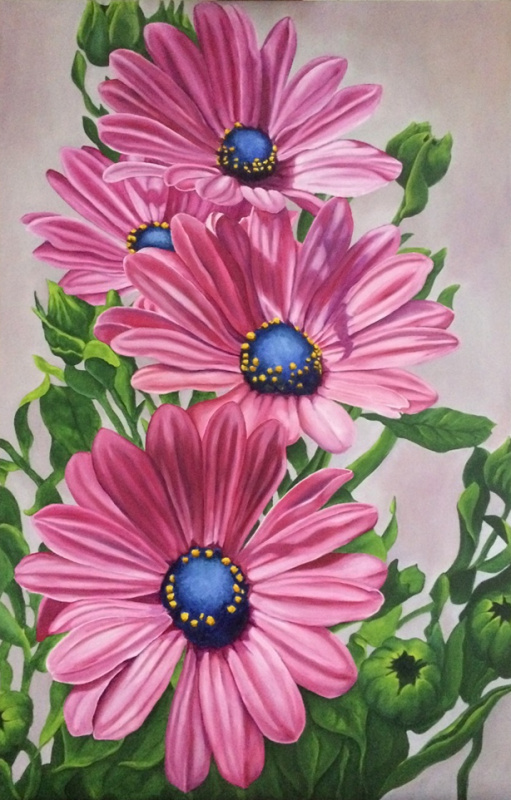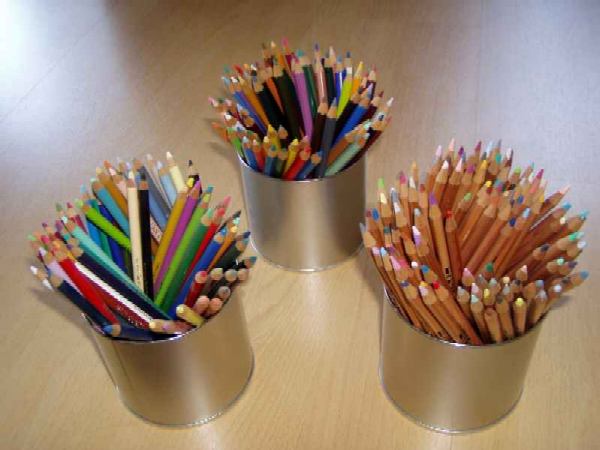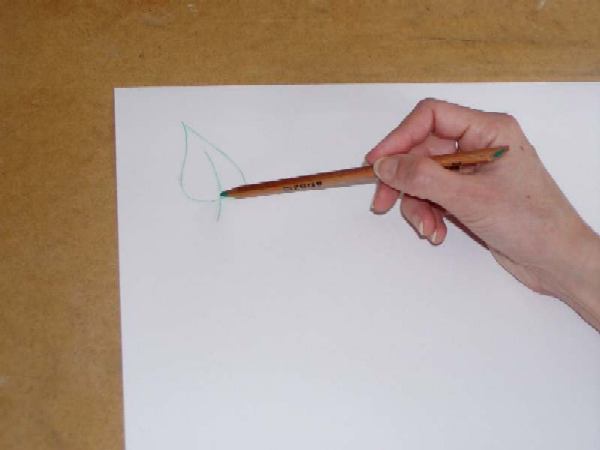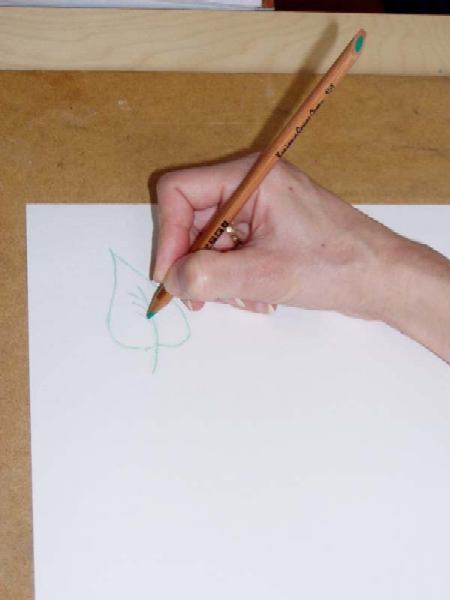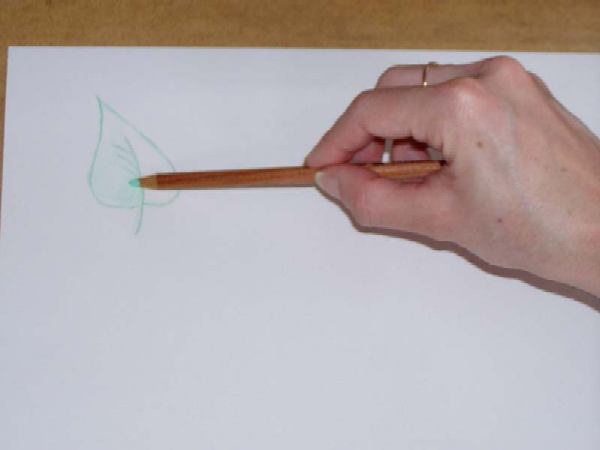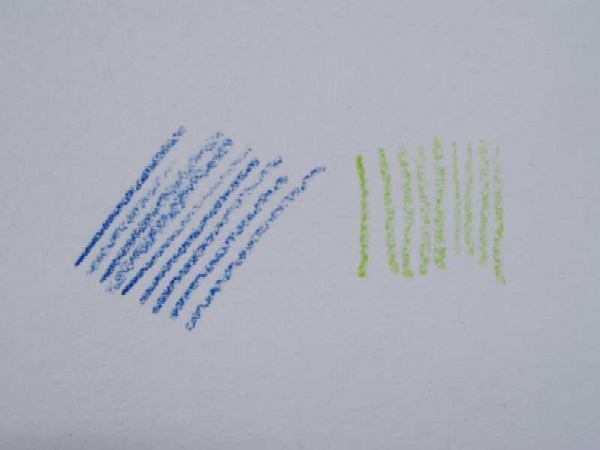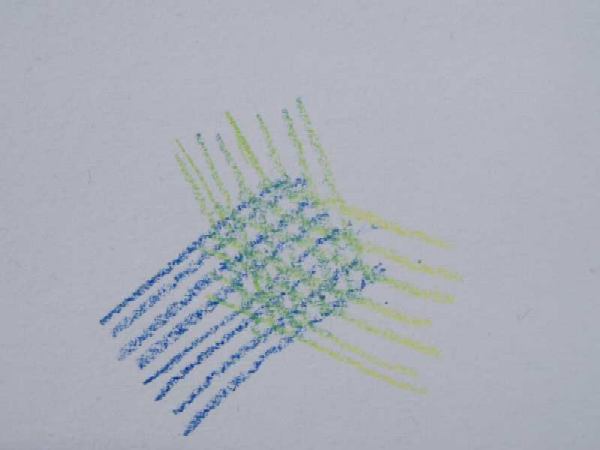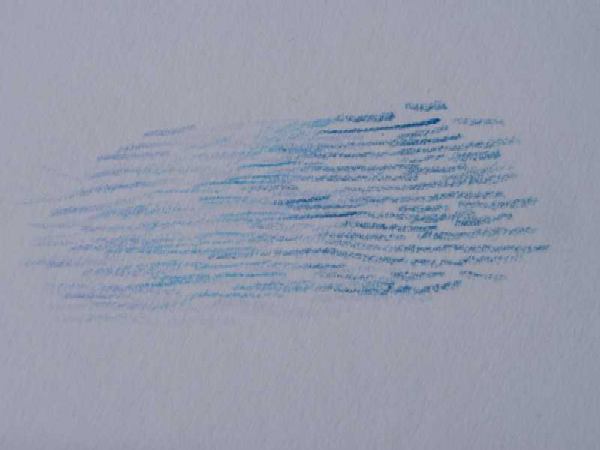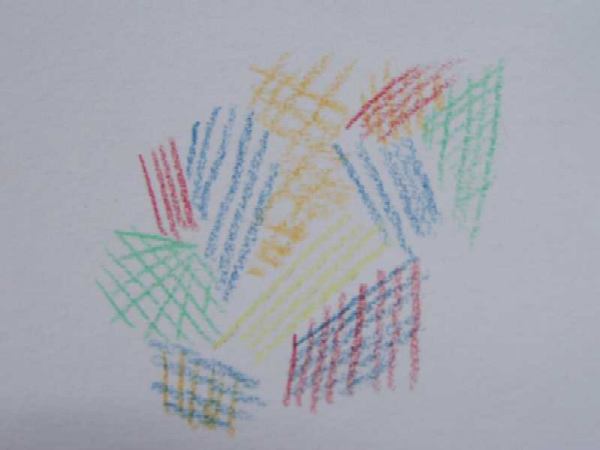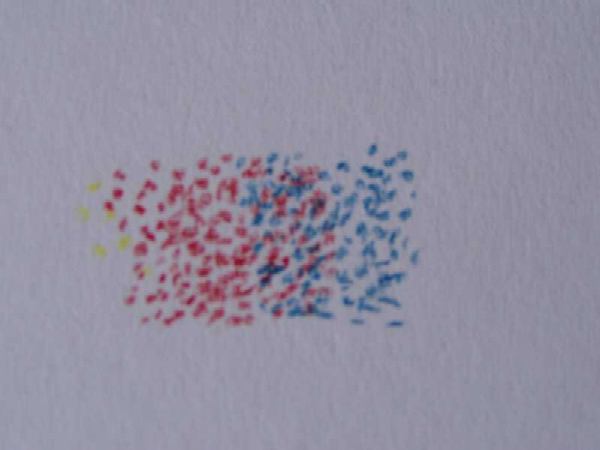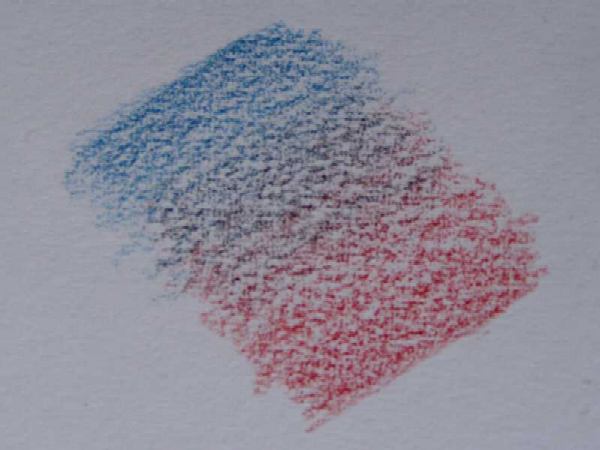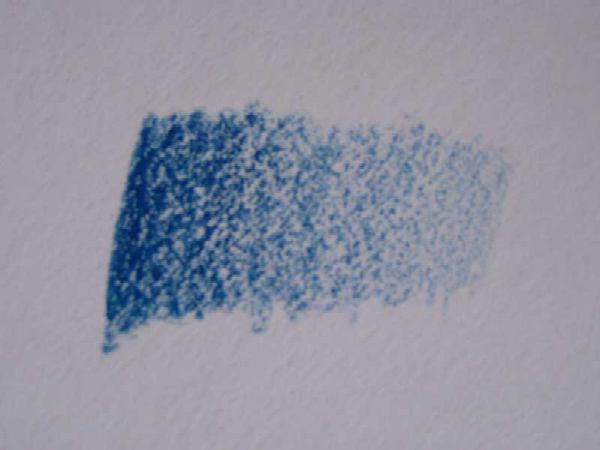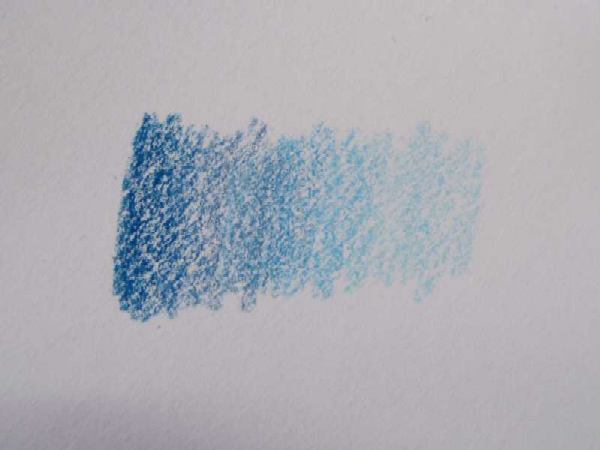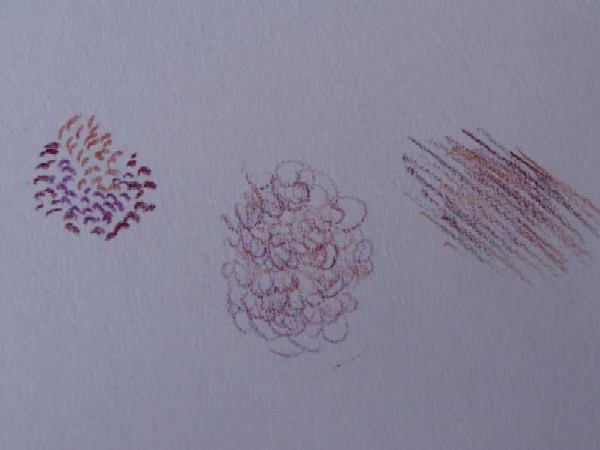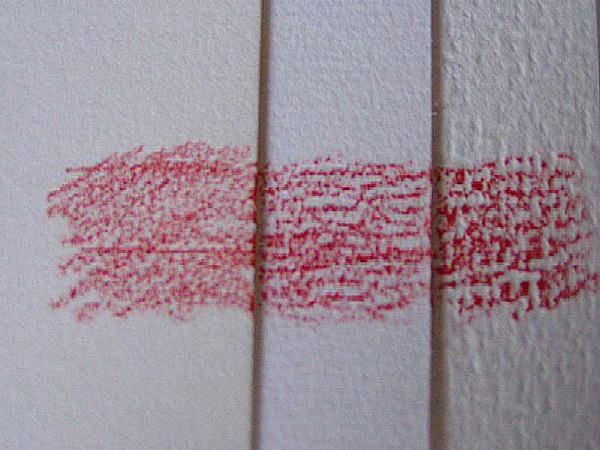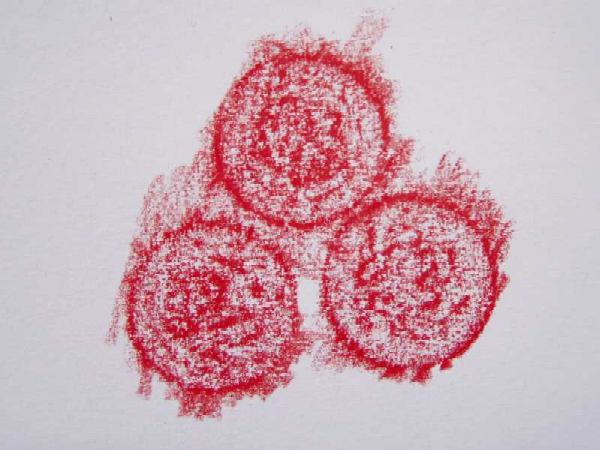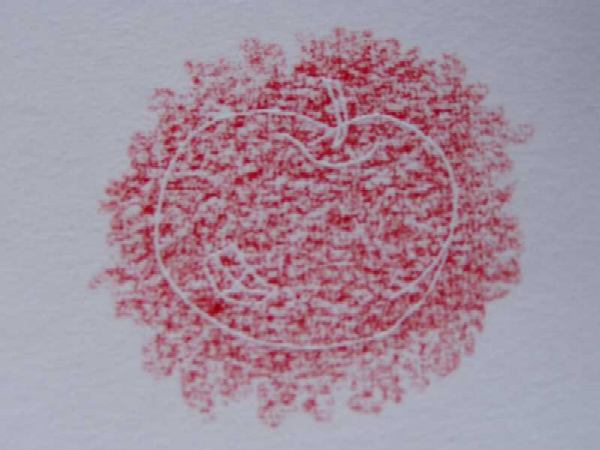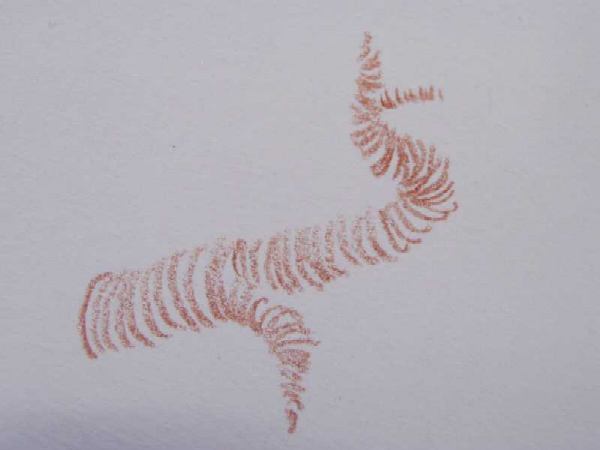| How to hold my pencil. |
Sketching and shading; when sketching, hold the pencil like a pen, but further back. Holding it this way creates a looser drawing, yet allows for good control. Try sketching from the wrist. You can use a graphite pencil for sketching, but if you use the correct color from the start, you won't see distracting graphite lines later on.
|
Details; when working on details, hold the pencil like a pen, close to the tip. Try to work from left to right if you're right-handed and from right to left if you're left-handed. If you need to rest on your work, you can place a clean cloth or piece of paper under your hand to prevent smudging.
|
Coloring; when coloring, hold the pencil as flat as possible on the paper for even color fillings, without leaving visible strokes. This way, you transfer as much color as possible without creating distracting impressions (lines) on the paper. The pencil can be held overhand or underhand. If you want to see the strokes or lines of the pencils while filling, hold the pencil more upright. The more upright it is, the more "line" you'll see.
|
|
Color Mixing
Color mixing with colored pencils can be done in various ways: |
Hatching; this involves placing lines of colored pencil next to each other. The length and spacing of the lines can vary. If you hold your pencil flatter on the paper, you'll get wider lines than if you hold it more upright.
|
Mixing by cross-hatching; instead of placing the lines next to each other, you can also cross them over each other. This doesn't have to be strictly horizontal and vertical. In the example, three directions are used. To mix colors, use a different color for each direction.
|
Mixing by "feathering"; this involves working color into each other by placing lines in various shades, all in the same direction. This creates a gradual color transition.
|
Free hatching; with free hatching, the lines are applied in random directions. The spacing and length of the lines can also vary.
|
Pointillism for optical mixing; pointillism is the application of colored pencil dots. By using various colors, they seem to blend. They don't actually blend, but that's how our eyes perceive it. Hence the term "optical" blending.
|
Glazing; this involves applying thin layers of color over each other. If the layers are thin, the underlying colors will show through. This allows them to blend. This works best when using different directions per layer.
|



